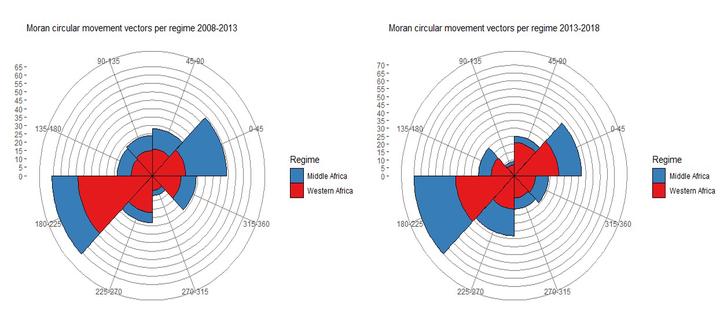Health Inequalities in West and Central Africa: New Evidence from a Space-Time Distributional Dynamics Analysis

Abstract
Health is improving in Sub-Saharan Africa. But still, there is a lot of inequality in its distribution. Focusing on West and Central Africa, this paper applies an exploratory space-time data analysis with a new geo-visualization technique, the directional LISA, to explore the spatial dimension of health distribution and inequality at the subnational level. It aims to investigate how spatial locations account for the differences in health across the subregions. Using the health index of the new Subnational Human Development Index database, the study covered 259 subnational geographical regions in 26 selected countries from 2008 to 2018. It reveals that geographical locations are crucial in understanding the distributional pattern of health in West and Central Africa. There are substantial heterogeneities within and across national borders, with the most prevalent pattern being a decline in health for the focal and their surrounding regions over the study period. Also, the health dynamics of the subnational regions in terms of economic community are completely different. These findings indicate the need to look into new avenues for developing and funding location-specific health policies that address the unique needs of the populations, improve subregional health, and reduce inequalities holistically. Coordinating actions is now more than urgent.